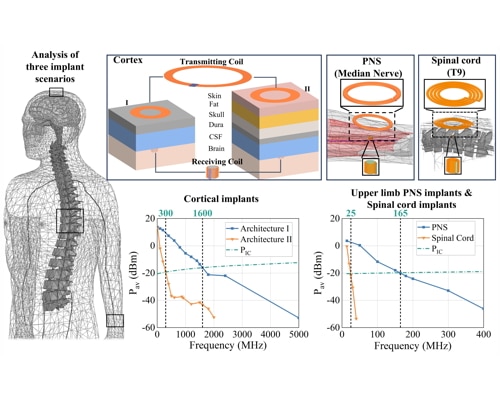A Systematic Study of Wireless Link Frequency Selection Strategies for Miniaturized Backscattering Neural Implants
Abstract
DOI: 10.1109/TMTT.2024.3486043
IEEEXplore: https://ieeexplore.ieee.org/document/10745135
Device
Highly miniaturized backscattering neural implant devices
Spectrum
10 MHz – 2.4 GHz
Novelty
The strategy presented considers antenna miniaturization objectives, tissue absorption limits, circuit power consumption requirements and FCC guidelines for two specific implant applications to determine a lower limit and viable frequency range for the wireless link.
A review of various other implant applications is presented alongside this work to compare wireless link frequencies for wireless power transfer (WPT) and far-field WPT techniques for homogeneous tissue and muscle tissue sensors.
Application
Miniaturized backscattering implant sensors.
Performance
Lower wireless link frequency limit established at 10 MHz for 1% BW for continuous monitoring for the sensors studies, and generally 10's of MHz for backscattering implant sensors.
-22.7 dB at 1.55 GHz (architecture I) and -24.3 dB at 276 MHz (Architecture II) maximum measured power transfer efficiency (PTE) for the coil subsystem.
35% (Architecture I) and 60% (Architecture II) measured power conversion efficiency (PCE) for the rectifier subsystem.
-23.3 dB at 1.60 GHz PTE, -7.7 dB PCE for the system (Architecture I);
-29.2 dB at 300 MHz PTE, -10.0 dB PCE for the system (Architecture II).
